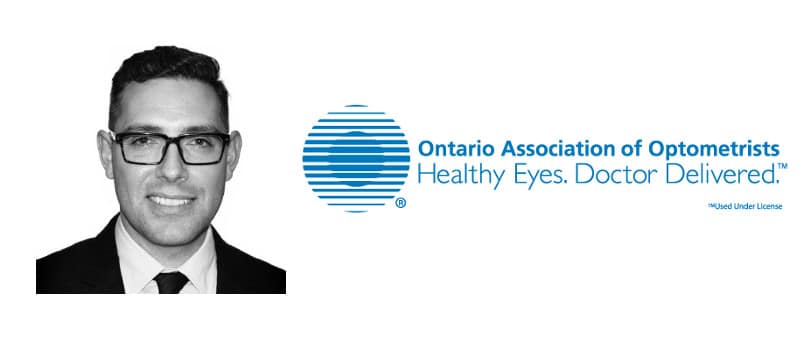Interview with Dr. Jeffrey Guthrie, New President of OAO
Thursday, December 15 2016 | 00 h 00 min | Appointments, News
On November 7, 2016, Dr. Jeffrey Guthrie of Bancroft, Ontario, took on the role of President of the Ontario Association of Optometrists for a two-year term ending Nov. 1, 2018. Dr. Guthrie hails from Sarnia, Ontario, and he received his B.Sc. from the University of Waterloo. He traveled to the United States for his Doctor of Optometry degree from the University of Illinois, and has ocular disease training at University of Chicago Hospitals, Veterans Hospitals of Detroit and West Palm Beach Florida.
Dr. Guthrie practiced in Victoria, B.C., for one year before returning to Ontario, where he practiced in various clinical settings for three years before joining Bancroft Eye Care. Dr. Guthrie commutes 3 hours each way from his Bancroft office to downtown Toronto – sometimes two times per week.
Infoclip.ca recently interviewed the new President for this three part series about his vision of Optometry in Ontario and how the Association can best serve its members.
Infoclip: As a Canadian with a US education, how do you think your background has provided a unique perspective for your leadership of optometry in Ontario?
Jeffrey Guthrie: One of the challenges we have in Ontario relates to the remuneration of Optometrists, especially when dealing with OHIP. The experience of having trained in the United States and having been in US practice settings is you have a much different perspective on how insurance works and what is medically necessary.
Here in Ontario our concept of what Optometrists do is wrapped up in the idea of the comprehensive eye exam. In the United States, they often take a much more problem-focused approach, which is coming to Ontario. By understanding this, we can work with the Ministry of Health to better orient how optometry services are funded.
But there are also challenges to that concept of prevention that are starting to crop up. There’s the example of the PSA tests for screening prostate cancer, and the controversy about the utility of that. When it comes to eye care, the regular eye exam is still quite important. It is a low cost screening tool.
Infoclip: Can you be more specific, how will your Assocation deal with the issue of compensation for your members?
J.G.: What we’ve been trying to do as an Association is to demonstrate to government where Optometrists can add value to the system. Taking care of more patients that have eye disease or are at high risk, such as patients with diabetes, is an area where optometry can provide more value to the government and there could be recognition of that value.
Infoclip: Most would advocate that prevention is better than problem-solving. What would be the place in the model for preventative care?
J.G.: This is something that is talked about a lot right now in the medical community. I would agree prevention is key, especially to a lot of eye problems. You want to try and intervene in most eye diseases early before a major loss of vision occurs. A perfect example is glaucoma; if you catch it too late and there is already vision loss you can’t bring that back.
Infoclip: How has the program to invite MPP’s into optometrists offices been well received? Will that be continuing?
J.G.: We started that last year with Optometry Day and we expanded into Optometry Week this year. It’s been really very helpful in bringing the MPP’s up to speed on what it is optometrists do day-to-day and how they help their patients in every community of the province, and where the opportunities are. I see that definitely growing, we’ve had a lot of great feedback both from the members that have participated and from the MPP’s that have come out to our practices.
In Part 2 of the interview, we ask about member benefits and the challenges the OAO faces in attracting new members.








